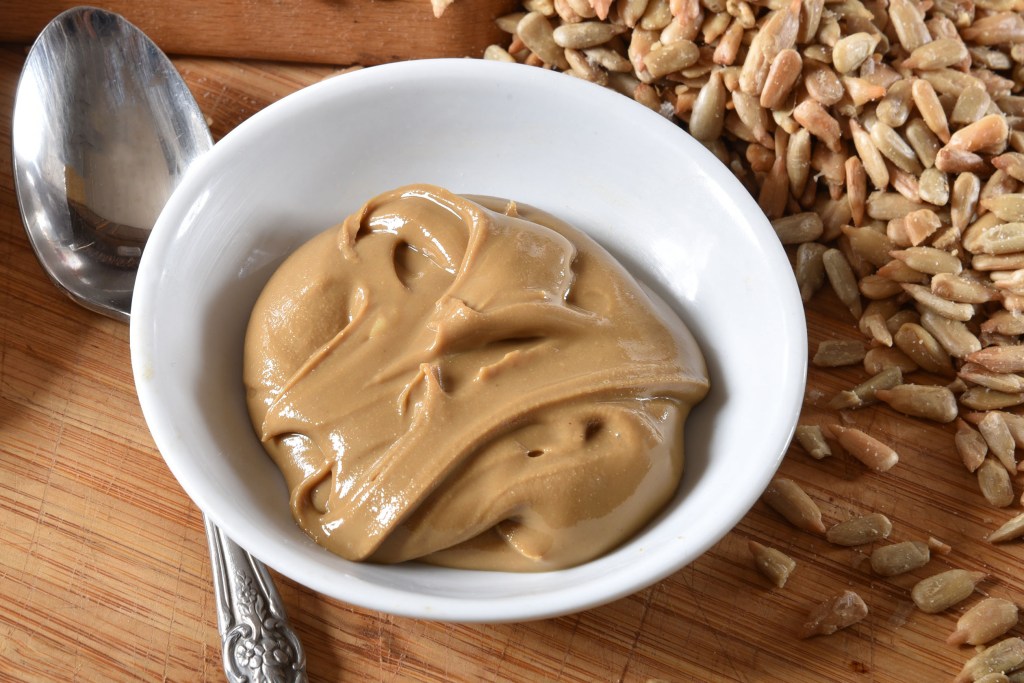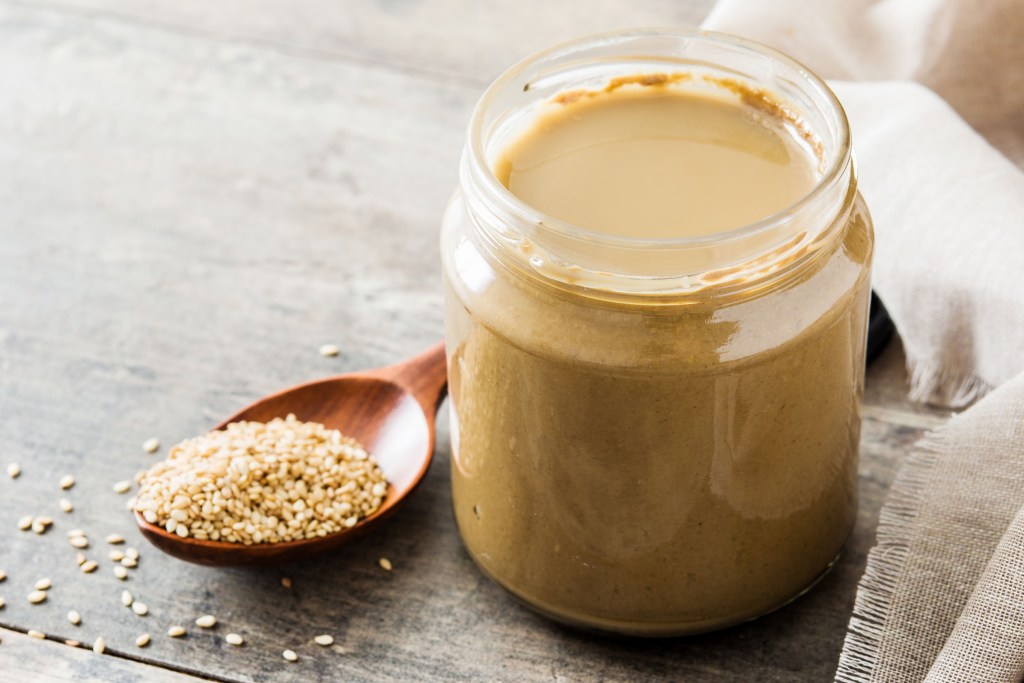We think of nut allergies as predominantly affecting children, but only about 20-25% of children outgrow them as they age. The rest go on to live their lives with this allergy. And while nuts impact allergy sufferers to different degrees of severity, avoidance is always the best course of action, which of course means no more peanut butter. If you or your child are allergic to nuts, there are lots of peanut butter alternatives that aren’t made from any kind of nut. Here are four of the best no-nut butter options to choose from.

Sunflower seed butter
For anyone with a nut allergy, sunflower seed butter is the closest you can get to the real deal. It has a nutty and salty flavor. If you enjoy snacking on sunflower seeds, you’ll love this tasty spread. The butter also has a smooth spreadable texture, just like peanut butter but a little thinner. The PB substitute is made from roasted, ground sunflower seeds, usually mixed with a little sugar, salt, and oil.
Nutritionally, sunflower butter has the edge over peanut butter. It contains more iron, vitamin E, and manganese. Sunflower seeds are also rich in omega-6 fatty acids and chlorogenic acid, which can help support healthy blood sugar and cholesterol levels. Sunflower butter tastes great on its own or used in sandwiches with jelly, smoothies, and savory dishes, like sauces and salad dressings.
Soy nut butter
This peanut butter alternative contains roasted and ground soybeans, salt, and oil. Some varieties also add sugar for a little extra sweetness. In terms of nutrition, and texture soy nut butter is very similar to peanut butter. The thick and creamy texture makes it great for spreading. It contains a lot of protein, 3.5 grams per tablespoon. The soy proteins and isoflavones in soy products can also help improve heart health.
The taste, however, may take some getting used to; some users note that the butter has a little bit of a stale taste and aftertaste. That said, you can easily mask the flavor with other delicious elements in your recipe. Soy nut butter works well in baked goods, oatmeal, smoothies, and more.

Tahini
Tahini, a traditional Middle Eastern condiment, is made from roasted sesame seeds. The consistency is silky, but thinner than peanut butter, so it’s better when used as an ingredient, rather than eaten on its own. It is often used in hummus, sauces, and desserts. The spread has a nutty, sesame taste. It’s usually sold unsweetened, making it ideal for those who don’t like their no-nut butters to be too sweet. Alternatively, you can balance the flavors by pairing tahini with honey or a sweet jam.
Tahini is similar to peanut butter in terms of nutrition. But it’s also rich in sesamin and sesamolin, two antioxidant compounds found in sesame seeds. The compounds have anti-cancer properties and can aid in reducing blood pressure and maintaining healthy blood pressure and cholesterol.
Granola butter
No, granola butter isn’t made from ground-up granola; it’s a mixture of mostly oats. Specific recipes vary, but many varieties also contain flax seeds, coconut oil, maple syrup, and olive oil. It has a warm, cinnamon taste, making it perfect for dipping apple slices. The butter will also taste great in recipes for sweet sauces or as a spread for toast and pancakes.
Granola butter is spreadable and creamy, too. Despite its sweet flavor, the nut- and gluten-free spread is surprisingly healthy. It’s high in fiber, which can help you feel full for longer, lower your cholesterol, and improve your blood sugar management. Granola butter also contains a fair amount of protein and healthy fats.
With these four no-peanut butter options, allergy sufferers can now enjoy all the greatness of peanut butter without the worry of reaction. Sunflower seed butter, soy nut butter, granola butter, and tahini are all readily available for purchase at most grocery stores. You can add any of these nut-free spreads to sandwiches, smoothies, sauces, and desserts, all with excellent, delicious results. They taste great, spread well, and are just as nutritious (or more so) than regular peanut butter. So, if you or someone you live with has an allergy, try out one of these fantastic no-nut butters; you’ll be so happy that you did!
BlissMark provides information regarding health, wellness, and beauty. The information within this article is not intended to be medical advice. Before starting any diet or exercise routine, consult your physician. If you don’t have a primary care physician, the United States Health & Human Services department has a free online tool that can help you locate a clinic in your area. We are not medical professionals, have not verified or vetted any programs, and in no way intend our content to be anything more than informative and inspiring.



